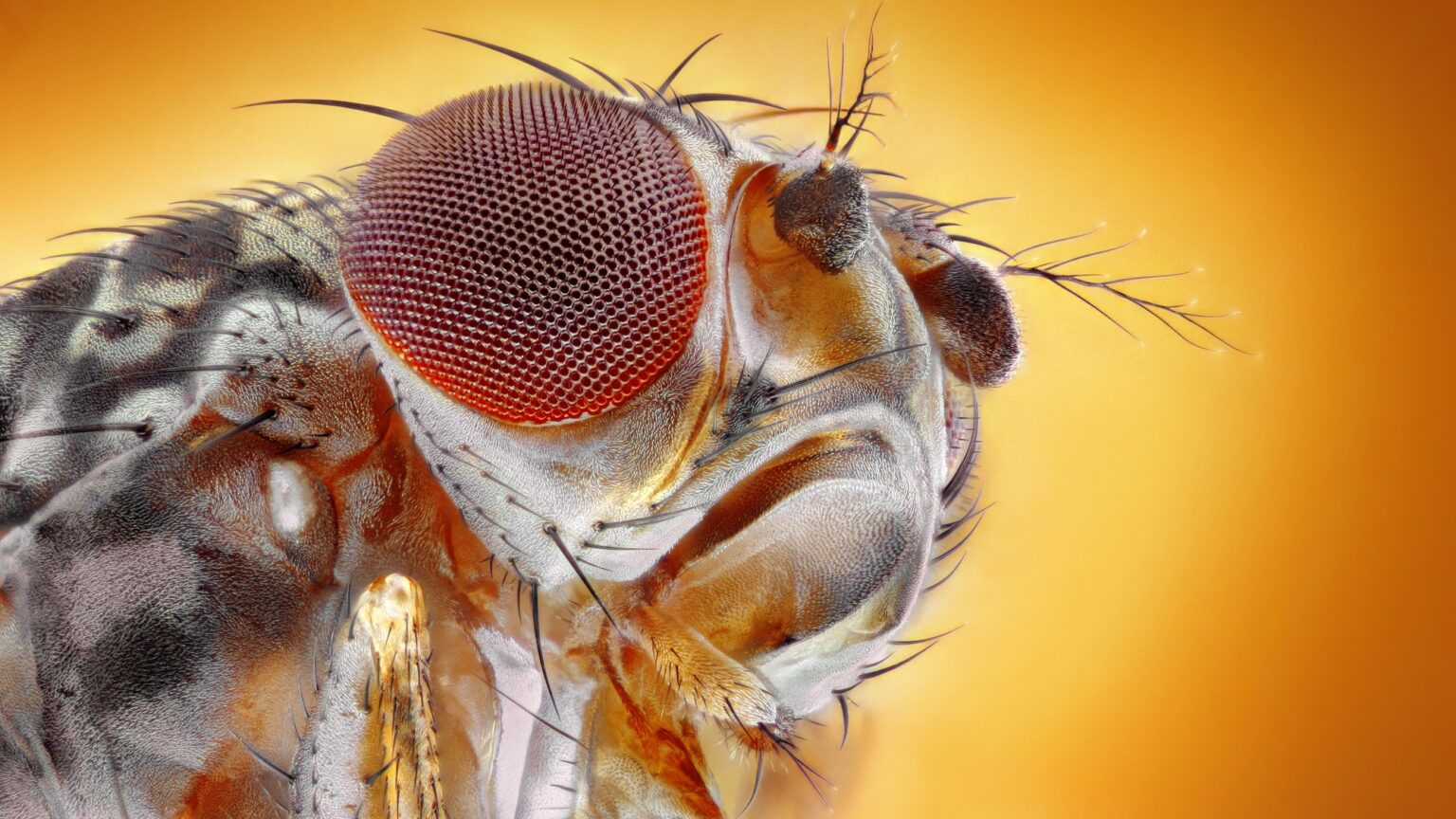Innovative Genetic Engineering in Fruit Flies Offers New Hope for Understanding Cocaine Addiction
!Close-up of a fruit fly’s head against an orange background
Image Credit: Deposit Photography
Unlocking the Secrets of Addiction Through Genetic Manipulation
In a groundbreaking development, researchers at the University of Utah have successfully engineered fruit flies to exhibit a propensity for cocaine-seeking behavior. While this may sound unconventional, the implications of this research could be transformative for addiction science, potentially paving the way for more effective treatment strategies. The detailed findings are published in the latest issue of the Journal of Neuroscience.
Why Fruit Flies Are Key to Understanding Human Diseases
Despite their simplicity, fruit flies (Drosophila melanogaster) share approximately 70-75% of their genes with humans, especially those involved in neurological functions and disease processes. Their short life cycle and genetic tractability make them ideal models for studying complex biological phenomena, including addiction. Historically, scientists have used these insects to explore the genetic underpinnings of various disorders, including substance abuse, due to their rapid reproduction and well-mapped genome.
However, previous experiments involving cocaine exposure in fruit flies faced a significant obstacle: the flies generally avoided the drug, showing no natural inclination toward it. This aversion posed challenges for studying addiction mechanisms in this model organism.
Overcoming Innate Aversion: A New Approach
Dr. Adrian Rothenfluh, senior author of the study and associate professor of psychiatry, explained, “Fruit flies do not naturally seek out cocaine; in fact, they tend to avoid it.” This aversion is rooted in their evolutionary biology, as insects are wired to steer clear of plant toxins, which include substances like cocaine.
In earlier experiments, when flies were exposed to cocaine, they consistently preferred plain sugar water over the drug-laced solution. The research team hypothesized that the flies’ innate taste receptors on their tarsi (the segments at the end of their legs) might be responsible for this rejection. These receptors are designed to detect bitter compounds, which often signal toxicity.
Disabling Taste Receptors to Induce Drug Preference
To test this hypothesis, the scientists genetically silenced the bitter-sensing receptors in the flies. Remarkably, once these receptors were deactivated, the insects began to develop a preference for cocaine-laced sugar water. Within just 16 hours, the modified flies actively sought out the drug-infused solution, demonstrating a clear shift toward addictive behavior.
Rothenfluh noted, “At low doses, the flies start to seek out cocaine, similar to how humans might begin experimenting with the substance. At higher doses, they become incapacitated, which mirrors the toxic effects seen in humans with overdose.”
Accelerating Addiction Research with Genetically Modified Flies
This breakthrough allows scientists to breed genetically altered flies that exhibit addiction-like behaviors, enabling rapid and detailed studies of the biological processes involved. Unlike traditional methods, which can take months or years, this approach accelerates the research timeline significantly.
Dr. Travis Philyaw, the study’s first author, emphasized, “We can now identify genes that influence addiction risk much more efficiently. By examining hundreds of genes simultaneously in flies, we can pinpoint those that may be difficult to study in more complex organisms like mammals.”
The ultimate goal is to translate these findings into human health applications. By understanding the genetic and neural mechanisms underlying cocaine preference, researchers hope to identify new therapeutic targets for addiction treatment.
Toward Personalized Addiction Therapies
The insights gained from this research could lead to the development of personalized medicine approaches, where treatments are tailored based on an individual’s genetic makeup. As Rothenfluh explained, “The more we understand about the mechanisms driving cocaine preference, the better equipped we are to design interventions that can disrupt these pathways and help individuals recover.”
This innovative use of genetic engineering in fruit flies marks a significant step forward in addiction research, offering a faster, more precise way to explore the complex interplay between genes, brain function, and behavior.
Stay Informed with the Latest Science News
The PopSci team continually tests and reviews a wide array of products and innovations, dedicating thousands of hours to bringing you the most relevant and cutting-edge information. Explore our latest guides and discoveries to stay ahead in science and technology.
Note: This article is part of our ongoing coverage of scientific breakthroughs and their implications for health and medicine.

